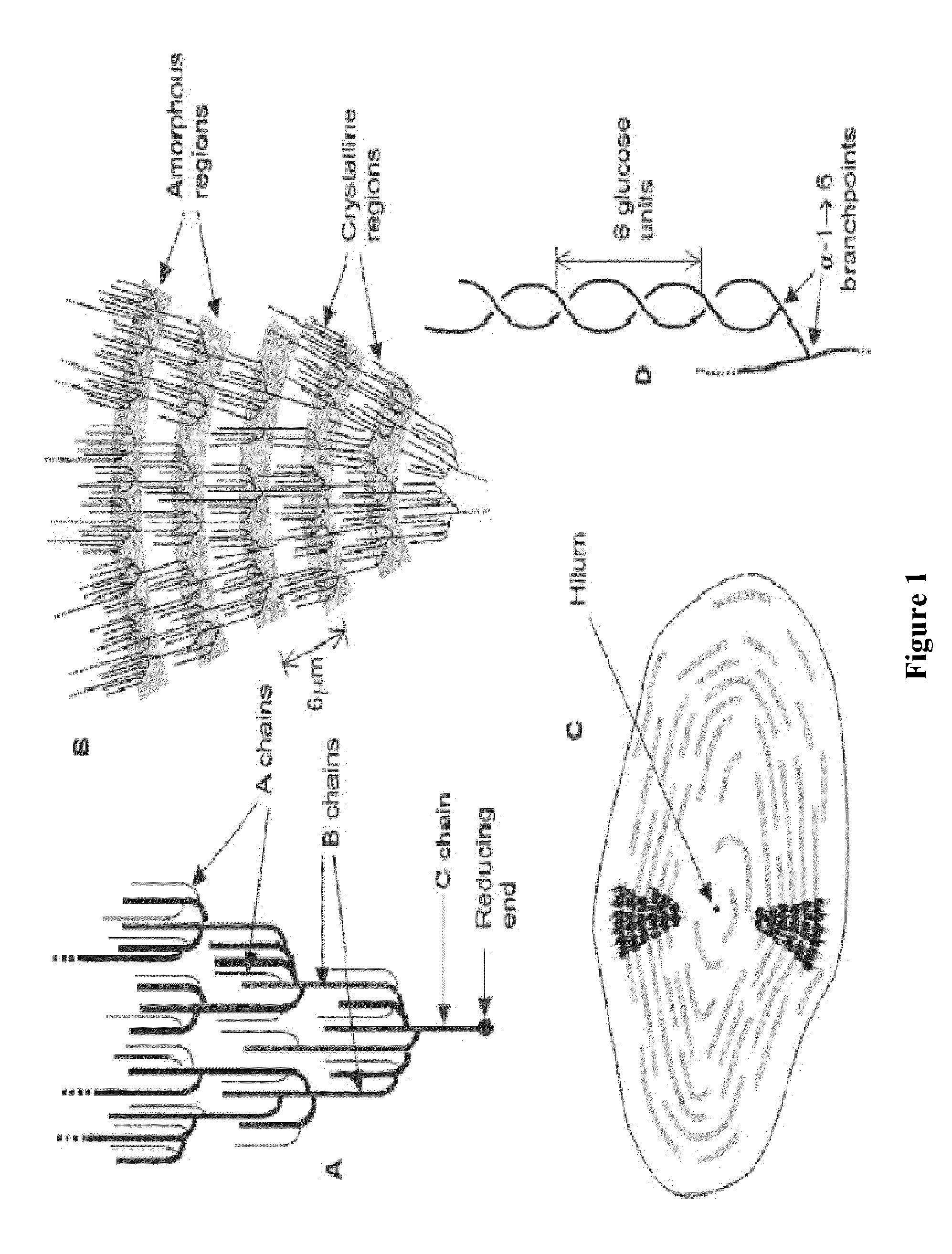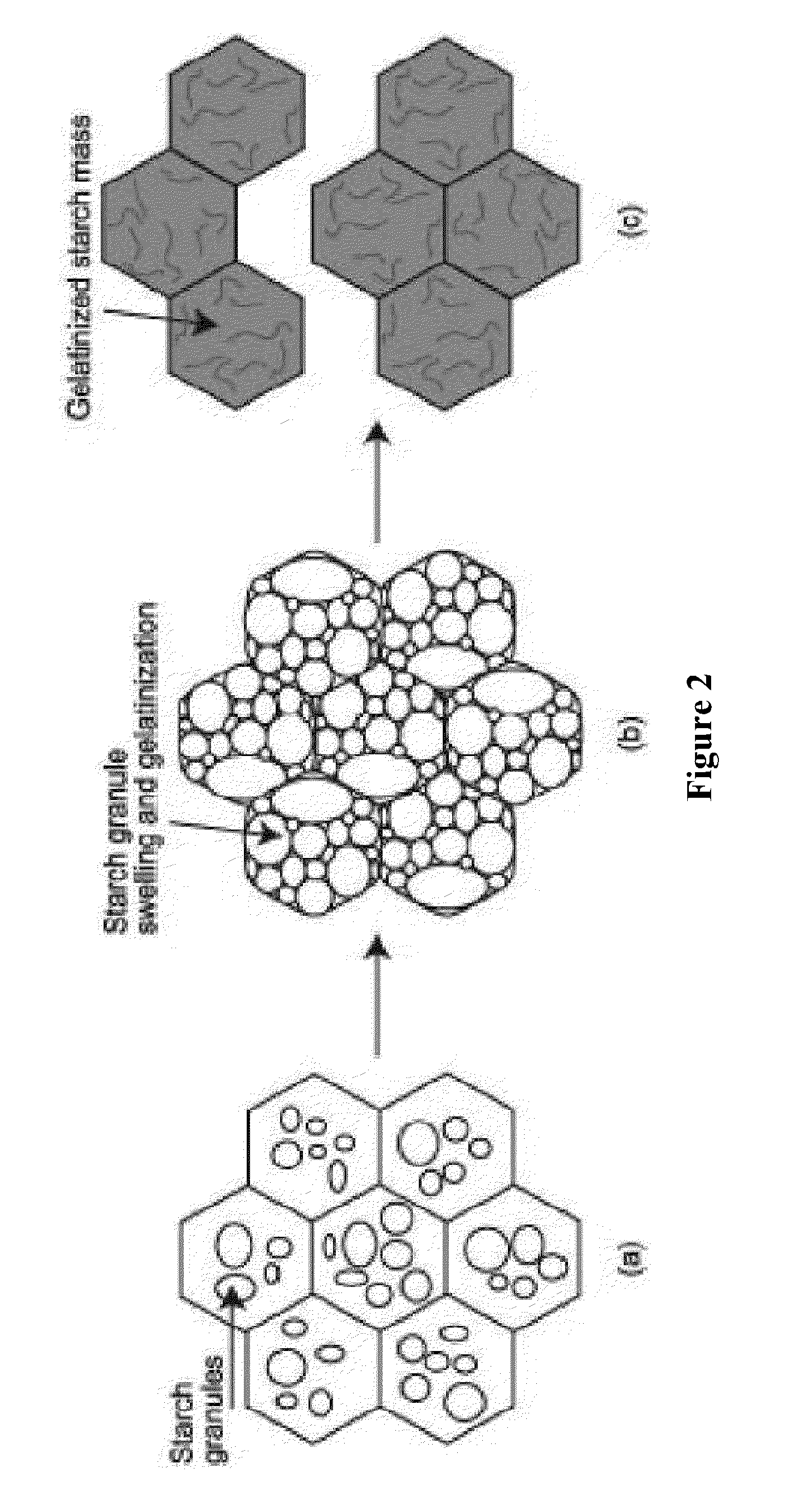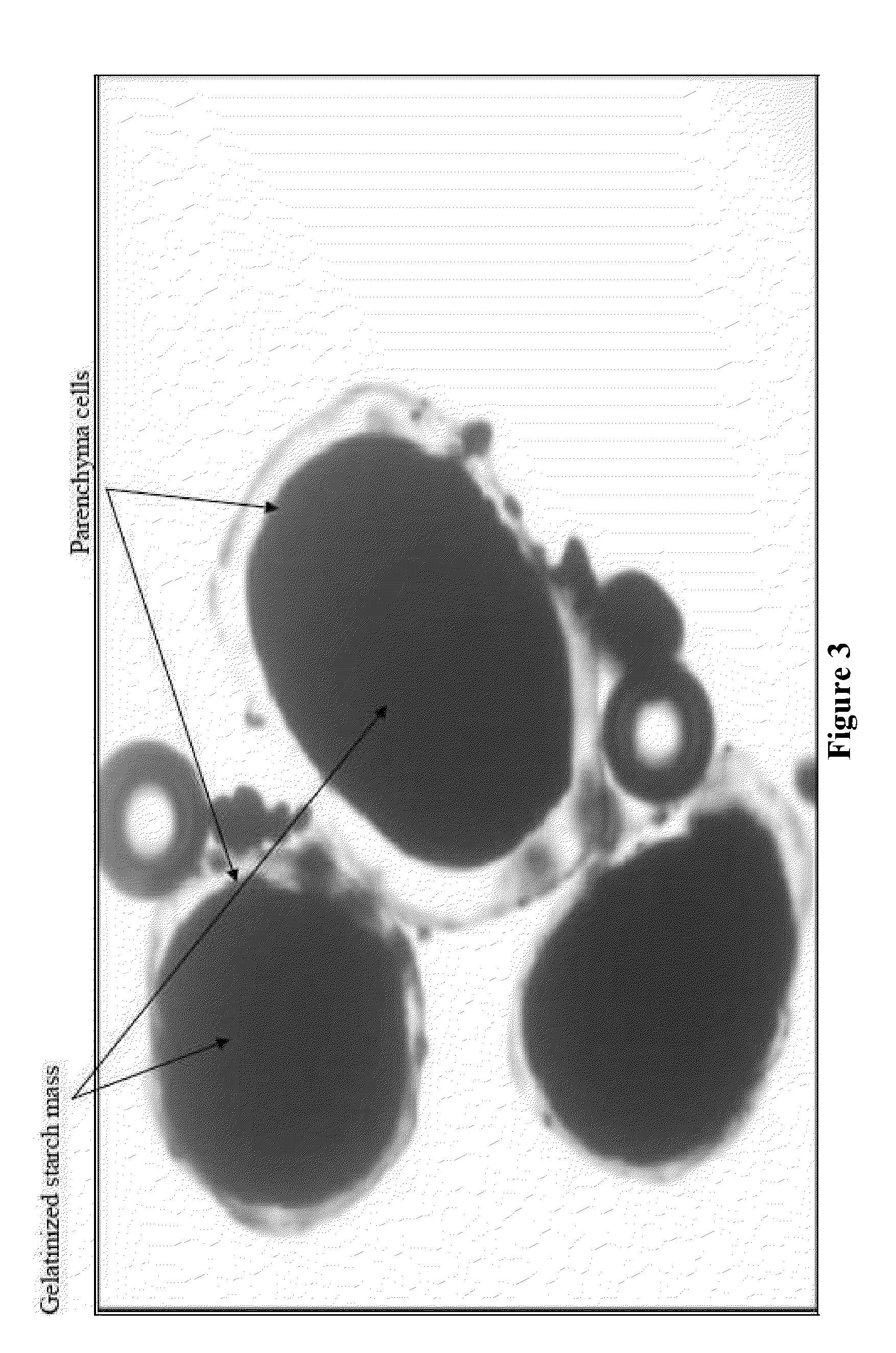Potato products with enhanced resistant starch content and moderated glycemic response and methods thereof
- Summary
- Abstract
- Description
- Claims
- Application Information
AI Technical Summary
Benefits of technology
Problems solved by technology
Method used
Image
Examples
example 1
[0106]To investigate modification with actual commercial food-grade reagents, commercial potato granules were substituted with propylene oxide (PO) using a factorial experimental design consisting of four PO addition levels (4.6%, 9.1%, 12.8% and 18.3% [w / w], based on potato granule dry weight) and two reaction temperatures (22 and 48° C.). Molar substitution (MS) values increased with both increasing PO addition levels and reaction temperatures. Enhancement of PO MS levels with increasing reaction temperature was attributed to a combination of possible factors including increased swelling of starch, a possible reduction of the Donnan potential, and / or a greater proportion of deprotonated starch alkoxide ions available for reaction. A positive correlation (r=0.93) between PO MS and RS levels indicated that incorporation of bulky hydroxypropyl groups onto starch molecules resulted in steric hindrance to the enzymic digestion, effectively promoting RS formation.
[0107]In contrast to RS...
example 2
[0108]In a second factorial experiment, the combined effects of PO substitution (0%, 10%, and 20% [w / w], based on potato granule dry weight), cross-linking with sodium trimetaphosphate (STMP) (0%, 1%, 2%, and 4% [w / w], based on potato granule dry weight), and reaction temperature (22, 34 and 48° C.) were investigated in regard to degrees of derivatization and RS formation. Both PO and STMP significantly contributed to RS formation, though the combined effects of two reagents were simply additive, rather than synergistic. The estimated Glycemic Index (eGI) for dual modified potato granules was significantly decreased by derivation (from 116.4 for unmodified granules to 59.7-65.9 for dual-modified granules), affecting both the rate and extent of starch hydrolysis by amylolytic enzymes. From a practical standpoint, the higher allowable reagent addition levels make PO a better choice than STMP for enhancement of RS content and reduction of the glycemic response within commercial potato ...
PUM
 Login to View More
Login to View More Abstract
Description
Claims
Application Information
 Login to View More
Login to View More - R&D
- Intellectual Property
- Life Sciences
- Materials
- Tech Scout
- Unparalleled Data Quality
- Higher Quality Content
- 60% Fewer Hallucinations
Browse by: Latest US Patents, China's latest patents, Technical Efficacy Thesaurus, Application Domain, Technology Topic, Popular Technical Reports.
© 2025 PatSnap. All rights reserved.Legal|Privacy policy|Modern Slavery Act Transparency Statement|Sitemap|About US| Contact US: help@patsnap.com



